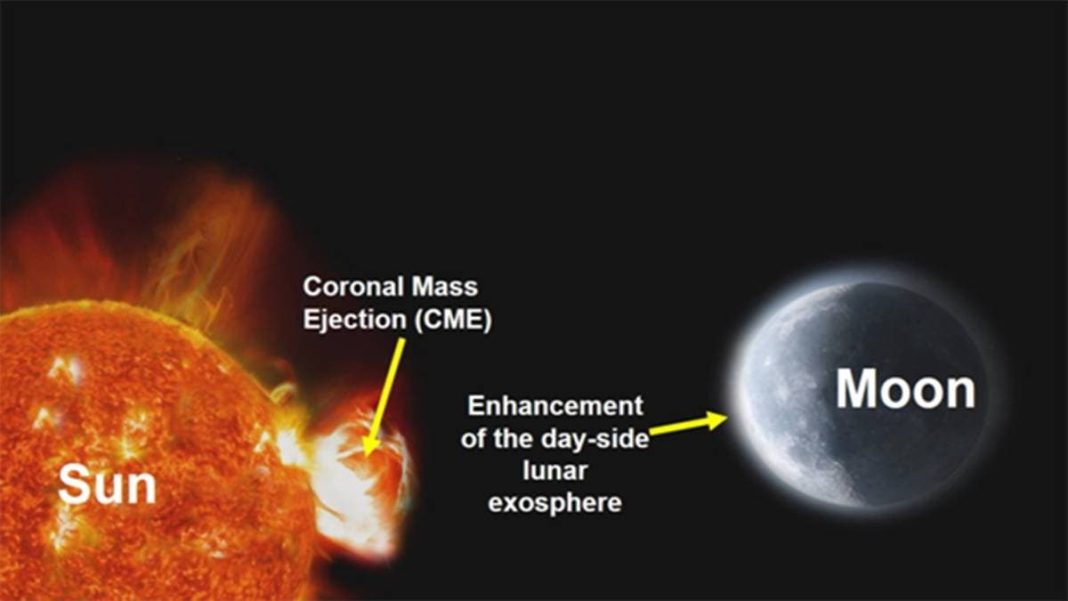Key Takeaways
- Chandrayaan-2’s CHACE-2 instrument made the first-ever observation of solar CME effects on the Moon
- Lunar exosphere pressure increased dramatically during the May 10, 2024 CME event
- Findings have significant implications for future lunar missions and base construction
India’s Chandrayaan-2 lunar orbiter has achieved a major scientific breakthrough by making the first-ever observation of how the Sun’s Coronal Mass Ejections (CMEs) affect the Moon. The Chandra Atmospheric Composition Explorer-2 (CHACE-2) instrument recorded significant changes in the lunar environment during a solar storm event.
Unprecedented Observation of Lunar Changes
During the CME impact, CHACE-2 detected a substantial increase in the total pressure of the Moon’s dayside exosphere – the fragile atmosphere surrounding our lunar neighbor. The data revealed that the number density of neutral atoms and molecules surged by more than an order of magnitude, confirming earlier theoretical predictions that had never been directly observed until now.
Understanding the Moon’s Unique Atmosphere
The Moon possesses what scientists classify as a ‘surface boundary exosphere’ – an extremely thin atmospheric layer where gas atoms and molecules rarely interact. This delicate environment is created through multiple processes including solar radiation, solar wind particles, and meteorite impacts that liberate atoms from the lunar surface.
Coronal Mass Ejections represent massive eruptions of solar material, primarily consisting of hydrogen and helium ions. These events have particularly strong effects on the Moon because it lacks both a substantial atmosphere and a global magnetic field that could provide protection from solar activity.
Rare Observation Opportunity
The breakthrough measurements occurred during a series of CMEs emitted by the Sun on May 10, 2024. The increased solar material impacting the Moon enhanced the process of knocking atoms off the lunar surface, releasing them into the exosphere and causing the observed pressure increase.
Implications for Future Lunar Exploration
These observations provide crucial scientific insights into lunar exosphere dynamics and space weather effects on airless bodies. The findings highlight the challenges facing future lunar base construction, as architects must account for such extreme solar events that can temporarily but significantly alter the lunar environment.
As continues to advance our understanding of space weather, this research demonstrates the importance of monitoring solar activity for the safety of future lunar missions and permanent installations.




